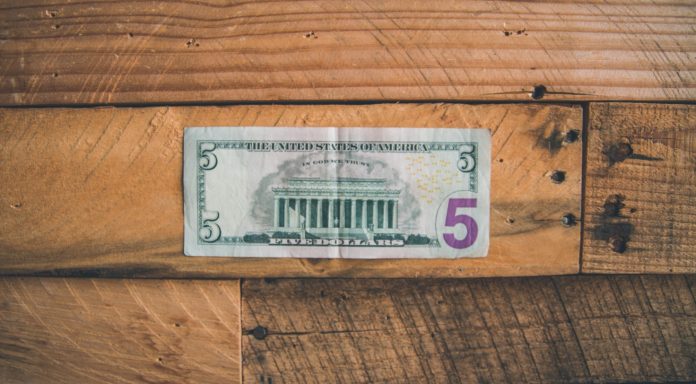The pound US dollar exchange rate dropped below the key level of US$1.28 on Tuesday. Mixed Brexit news and a stronger dollar took the pair to a four-day low.
| What do these figures mean? |
|---|
| When measuring the value of a pair of currencies, one set equals 1 unit and the other shows the current equivalent. As the market moves, the amount will vary from minute to minute.For example, it could be written:1 GBP = 1.28934 USD Here, £1 is equivalent to approximately $1.29. This specifically measures the pound’s worth against the dollar. If the US dollar amount increases in this pairing, it’s positive for the pound. Or, if you were looking at it the other way around:1 USD = 0.77786 GBP In this example, $1 is equivalent to approximately £0.78. This measures the US dollar’s worth versus the British pound. If the sterling number gets larger, it’s good news for the dollar. |
Bank of England (BoE) Governor Mark Carney offered some support to the pound when he appeared before the Treasury Select Committee. Mark Carney said that he believed that the UK would secure a smooth transition period. Furthermore, he said he supported Theresa May’s Brexit deal as he believed it would be broadly supportive of the UK economy. Specifically, Mark Carney noted that he believed the deal would boost investment and clear much of the uncertainty surrounding Brexit.
Any optimism following Mark Carney’s comments quickly disappeared as doubts over the DUP’s support for Theresa May surfaced again. The DUP is the Irish party whose votes Theresa May depends on to push decisions through Parliament. There support will be necessary for the Brexit deal to go through Parliament. However growing tensions is making a supportive vote from the DUP increasingly unlikely putting the Brexit deal at risk and making a disorderly Brexit more likely.
| Why is a “soft” Brexit better for sterling than a “hard” Brexit? |
|---|
| A soft Brexit implies anything less than UK’s complete withdrawal from the EU. For example, it could mean the UK retains some form of membership to the European Union single market in exchange for some free movement of people, i.e. immigration. This is considered more positive than a “hard” Brexit, which is a full severance from the EU. The reason “soft” is considered more pound-friendly is because the economic impact would be lower. If there is less negative impact on the economy, foreign investors will continue to invest in the UK. As investment requires local currency, this increased demand for the pound then boosts its value. |
The UK economic calendar is light across the week. On Tuesday, investors shrugged off data from the Confederation of British Industry which showed an unexpected increase in manufacturing. Usually strong data would lift the pound, however market participants are very aware that continued strength in manufacturing would depend on a Brexit deal.
Today investors could glance towards UK government public sector net borrowing data in between Brexit headlines.
Dollar Rebounds After Heavy Sell Off
Demand for the dollar was strong on Tuesday. The dollar rebounded in the previous session, benefitting from its safe haven status. US — China trade tensions continue; political risk in Europe remains elevated with Italy and Brexit and concerns are growing over slowing global growth. These factors combined means sentiment is weak and investors are searching for safer investments.
Today durable goods data will be in focus. Analysts expect durable goods orders to have fallen in October by -2.5% compared to an increase of 0.7% in September. Analysts are attributing the fall to a decline in government defence spending. Economic data from the US on the whole remains strong, therefore even if the data is weak it may not have a huge impact on the dollar.
| Why does poor economic data drag on a country’s currency? |
|---|
| Slowing economic indicators point to a slowing economy. Weak economies have weaker currencies because institutions look to reduce investments in countries where growth prospects are low and then transfer money to countries with higher growth prospects. These institutions sell out of their investment and the local currency, thus increasing supply of the currency and pushing down the money’s worth. So, when a country or region has poor economic news, the value of the currency tends to fall. |
This publication is provided for general information purposes only and is not intended to cover every aspect of the topics with which it deals. It is not intended to amount to advice on which you should rely. You must obtain professional or specialist advice before taking, or refraining from, any action on the basis of the content in this publication. The information in this publication does not constitute legal, tax or other professional advice from TransferWise Inc., Currency Live or its affiliates. Prior results do not guarantee a similar outcome. We make no representations, warranties or guarantees, whether express or implied, that the content in the publication is accurate, complete or up to date. Consult our risk warning page for more details.
This article was initially published on TransferWise.com from the same author. The content at Currency Live is the sole opinion of the authors and in no way reflects the views of TransferWise Inc.





